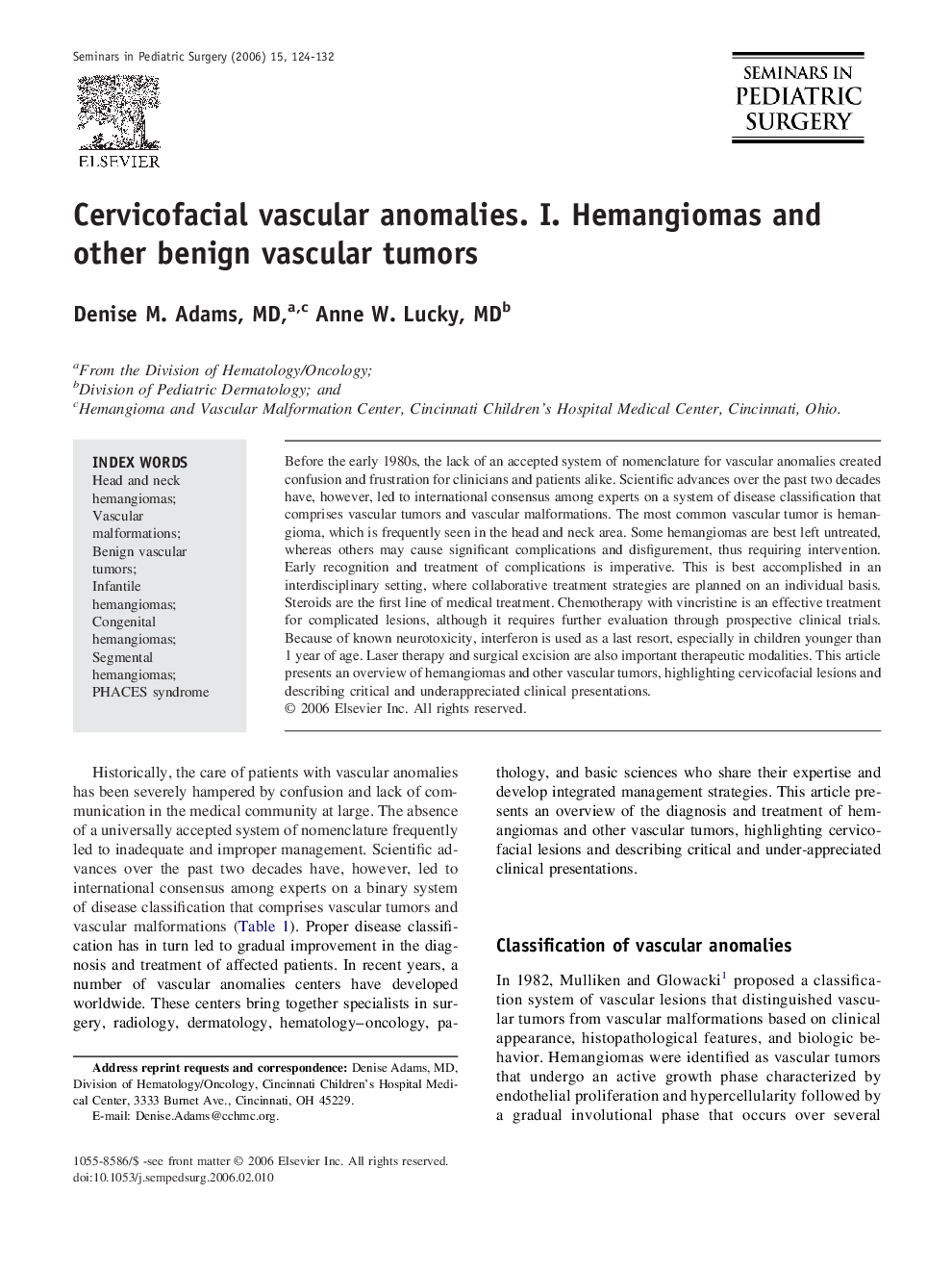| Article ID | Journal | Published Year | Pages | File Type |
|---|---|---|---|---|
| 4176859 | Seminars in Pediatric Surgery | 2006 | 9 Pages |
Before the early 1980s, the lack of an accepted system of nomenclature for vascular anomalies created confusion and frustration for clinicians and patients alike. Scientific advances over the past two decades have, however, led to international consensus among experts on a system of disease classification that comprises vascular tumors and vascular malformations. The most common vascular tumor is hemangioma, which is frequently seen in the head and neck area. Some hemangiomas are best left untreated, whereas others may cause significant complications and disfigurement, thus requiring intervention. Early recognition and treatment of complications is imperative. This is best accomplished in an interdisciplinary setting, where collaborative treatment strategies are planned on an individual basis. Steroids are the first line of medical treatment. Chemotherapy with vincristine is an effective treatment for complicated lesions, although it requires further evaluation through prospective clinical trials. Because of known neurotoxicity, interferon is used as a last resort, especially in children younger than 1 year of age. Laser therapy and surgical excision are also important therapeutic modalities. This article presents an overview of hemangiomas and other vascular tumors, highlighting cervicofacial lesions and describing critical and underappreciated clinical presentations.
